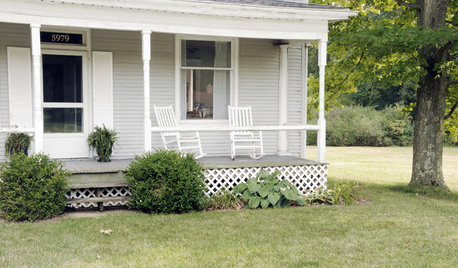Watering Schedule, Bermuda Taking Over, any help appreciated!
mirz2000
12 years ago
Related Stories

KITCHEN DESIGNKitchen of the Week: Taking Over a Hallway to Add Needed Space
A renovated kitchen’s functional new design is light, bright and full of industrial elements the homeowners love
Full Story
LIFE9 Ways to Appreciate Your House Just as It Is
Look on the bright side — or that soothingly dark corner — to feel genuine gratitude for all the comforts of your home
Full Story
HOME OFFICESOnline Tools Help Paperless Plunge
Pay bills, catch up on reading and keep track of schedules and dates with these terrific online tools
Full Story
DECORATING GUIDESHouzz Call: What Home Collections Help You Feel Like a Kid Again?
Whether candy dispensers bring back sweet memories or toys take you back to childhood, we'd like to see your youthful collections
Full Story
BATHROOM WORKBOOKStandard Fixture Dimensions and Measurements for a Primary Bath
Create a luxe bathroom that functions well with these key measurements and layout tips
Full Story
WORKING WITH PROS5 Steps to Help You Hire the Right Contractor
Don't take chances on this all-important team member. Find the best general contractor for your remodel or new build by heeding this advice
Full Story
SMALL SPACESDownsizing Help: Storage Solutions for Small Spaces
Look under, over and inside to find places for everything you need to keep
Full Story
LIFE12 House-Hunting Tips to Help You Make the Right Choice
Stay organized and focused on your quest for a new home, to make the search easier and avoid surprises later
Full Story
DECLUTTERINGDownsizing Help: How to Edit Your Belongings
Learn what to take and what to toss if you're moving to a smaller home
Full Story
ORGANIZINGDo It for the Kids! A Few Routines Help a Home Run More Smoothly
Not a Naturally Organized person? These tips can help you tackle the onslaught of papers, meals, laundry — and even help you find your keys
Full Story



ZoysiaSod
dchall_san_antonio
Related Professionals
Carlisle Landscape Architects & Landscape Designers · Owings Mills Landscape Architects & Landscape Designers · Simi Valley Landscape Architects & Landscape Designers · Bedford Landscape Contractors · Dallas Landscape Contractors · Deerfield Beach Landscape Contractors · Duarte Landscape Contractors · La Mirada Landscape Contractors · New Providence Landscape Contractors · North Haven Landscape Contractors · Palatine Landscape Contractors · South Portland Landscape Contractors · Vallejo Landscape Contractors · Vancouver Landscape Contractors · Hueytown Landscape Contractorstexas_weed
mirz2000Original Author
ZoysiaSod
ZoysiaSod
jdo053103
dchall_san_antonio
rager_w
mirz2000Original Author
ZoysiaSod
texas_weed
ZoysiaSod